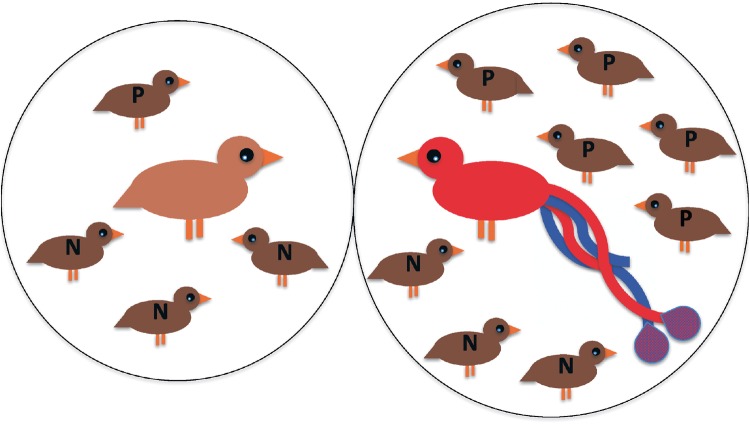Figure 2.
Direct selection against a male choice allele emerges under polygyny in a “null model.” A male with a “preference” allele and a male with a “no preference” allele are faced with an ornamented and an unornamented female (center of each circle). Both males are assumed to have the same amount of energy to devote to courtship (denoted in the figure by 6 males, representing courting males, for males with both the “no preference,” “N,” and the “preference,” “P” alleles). The male with the “no preference” allele will distribute his courtship (the “N”s) randomly between the females. The male with the “preference” allele, however, will direct more courtship (the “P”s) to the ornamented female. The male with the “no preference” allele is overrepresented in courting the non-ornamented female, and is most likely to obtain a mating there (3 Ns out of 4 courting males in the figure). The male with the “preference” allele is overrepresented in courting the ornamented female (5 Ps out of 8 courting males), but not to the same extent as the “no preference” male was in courting the plain female (3/4 = 0.75 > 5/8 = 0.625). The male with the “preference” allele is thus at a competitive disadvantage due to his biased courtship, leading to direct selection against the “preference” allele. This may help to explain why highly ornamented females, such as the one in the figure, are rarely seen in nature.

